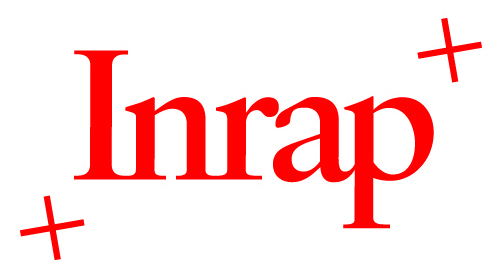The Evolution of fieldwork methods and techniques in preventive archaeology between 1988 and 2020
L’évolution des pratiques de terrain en archéologie préventive de 1988 à nos jours
Résumé
This brief consists of a review of my professional activity and scientific practice since 1988, the year of my first contract as an excavation technician at AFAN, which corresponds to the beginning of the period of the first major works and the development of a preventive archaeology on a national scale. If this work is centered on my own experience, I will try to put it in perspective with the global evolution of French preventive archaeology as I have been able to perceive it and as I have been able to analyze it critically within the structures to which I have belonged. (AFAN, then INRAP) during all these years. Collecting in a brief the data of my professional activity presents some difficulties that cannot be avoided, as the sources are numerous and varied, originating from different periods, regions, or even cultures. The approximately 140 operations (including 82 diagnostic and 43 excavations, the rest in building study, follow-up work, or evaluation) in which I participated can serve as a material for this study and form the basis of a statistical balance used to determine the logic of my career, in the light of the general evolution of preventive archaeology. Tracing my career path offers the opportunity to review the conditions of the creation of AFAN and to identify the various aspects of it. My professional development in the wake of changes from the North-East to the South-West of France allows me to compare two very different regions from an economic, historical and cultural point of view: Lorraine and Aquitaine. Explaining exactly what the work of an archaeologist is at Inrap is the most difficult, such as determining what in my profession is research and what is not. My mission as a researcher is to restore the past and transmit my knowledge to as many people as possible. I will try to identify the essential aspects of a professional practice with many complementary facets. From a scientific point of view, my professional career has offered me the opportunity to approach various chrono-cultural fields, ranging from prehistotic to contemporary times. However, the Middle Ages remains as my period of predilection and the area in which I have the most experience and skills. My professional career gave me the opportunity to refine gradually my scientific project and to finally focus my activity on the habitat of the elites (Morlanne and Montaner castles) and what it is agreed to call today the urban factory (Orthez). From a technical point of view, the retrospective examination of my various operational reports has enabled me to make progress in my daily practice of archaeology, in presenting the subject of the research and in the scientific approach followed. These developments are due both to my professional experience but also to a progressive refinement, to the improvement of techniques of search, recording and processing of data to which I was able to adapt.
Ce mémoire de VAE consiste en un bilan de mon activité professionnelle et de ma pratique scientifique depuis 1988, l'année de mon premier contrat comme technicienne d’opération et de fouille à l’AFAN, qui correspond au début de la période des premiers grands travaux et au développement d’une archéologie préventive à l’échelle nationale. Si ce travail est centré sur mon expérience propre, je tenterai de le mettre en perspective avec l’évolution globale de l’archéologie préventive française telle que j’ai pu la percevoir et telle que j’ai pu l’analyser de façon critique au sein des structures auxquelles j’ai appartenu (l’AFAN, puis l’Inrap) durant toutes ces années. L’exercice qui consiste à rassembler dans un mémoire les données de mon activité professionnelle présente quelques difficultés qu’on ne peut éluder, tant les sources sont nombreuses et variées, émanant d’époques, de régions, voire de cultures différentes. Les quelques 140 opérations (dont 82 de diagnostic et 43 de fouille, le reste en étude de bâti, suivi de travaux, ou évaluation) auxquelles j’ai participé peuvent servir de matériau à cette étude et constituer la base d’un bilan statistique servant à dégager la logique de mon parcours, au regard de l’évolution générale de l’archéologie préventive. Retracer mon parcours professionnel offre l’occasion de revenir sur les conditions de la création de l’AFAN et d’en identifier les différents aspects. Mon évolution professionnelle au gré des mutations du nord-est vers le sud-ouest de la France me permet de comparer deux régions très différentes d’un point de vue économique, historique et culturel : la Lorraine et l’Aquitaine. Expliquer exactement en quoi consiste le travail d’archéologue à l’Inrap est le plus difficile, comme de déterminer ce qui, dans mon métier est de la recherche et ce qui n’en est pas. Ma mission de chercheur consiste à restituer le passé et transmettre mon savoir au plus grand nombre. Je tenterai de dégager les aspects essentiels d’une pratique professionnelle aux multiples facettes complémentaires.Sur le plan scientifique, mon parcours professionnel m’a offert la possibilité d’aborder des champs chrono-culturels variés, allant de la préhistoire à l’époque contemporaine. Le Moyen-Âge reste cependant ma période de prédilection et le domaine dans lequel j’ai le plus d’expériences et de compétences. Mon parcours professionnel m’a offert la possibilité d’affiner progressivement mon projet scientifique et de centrer finalement mon activité sur l’habitat des élites (château de Morlanne et Montaner) et ce qu’il est convenu de désigner aujourd’hui sous le terme de fabrique urbaine (Orthez). Sur le plan technique, l’examen rétrospectif de mes différents rapports d’opération m’a permis de réaliser les progrès accomplis dans ma pratique quotidienne de l’archéologie, dans la présentation de l’objet de la recherche et dans la démarche scientifique suivie. Ces évolutions sont imputables à la fois à mon expérience professionnelle mais aussi à un affinement progressif, à l’amélioration des techniques de fouille, d’enregistrement et de traitement des données à laquelle j’ai su m’adapter.

